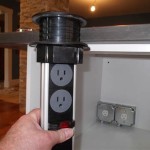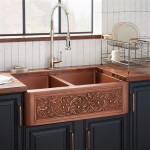When it comes to running a successful restaurant, the kitchen plays a vital role. Not only is it where the food is prepared and cooked, but it is also the place where hygiene is of utmost importance. As such, selecting the right flooring for your restaurant kitchen is essential to ensure safety, durability, and ease of cleaning.
Types of Flooring to Consider
When selecting a floor for your restaurant kitchen, you will have a number of options to choose from. The most popular choices include vinyl, tile, concrete, and rubber. Each type of flooring has its own benefits and drawbacks, so it is important to consider all of them before making a decision.
Vinyl Flooring
Vinyl flooring is a popular choice for restaurant kitchens due to its affordability and ease of installation. It is also easy to clean and maintain, making it a great option for busy restaurants. The only downside is that vinyl can be prone to staining, so it may need to be replaced more often than other types of flooring.
Tile Flooring
Tile flooring is another popular choice for restaurant kitchens. It is durable, easy to clean, and can be designed in a variety of colors and patterns. However, tile can be expensive and difficult to install, which can make it a less desirable option for some restaurants.
Concrete Flooring
Concrete flooring is becoming increasingly popular in restaurant kitchens due to its low cost and durability. It is also easy to clean and can be customized with a variety of colors and patterns. The main drawback of concrete flooring is that it can be cold and uncomfortable to stand on for long periods of time.
Rubber Flooring
Rubber flooring is a great choice for restaurant kitchens due to its durability, slip-resistance, and sound absorption. It is also easy to clean and can be customized with a variety of colors and patterns. The only downside is that rubber can be expensive and difficult to install.
Factors to Consider
When selecting the right flooring for your restaurant kitchen, there are a few factors to consider. These include the cost, installation process, durability, maintenance requirements, and overall aesthetics.
Cost
The cost of the flooring is one of the most important factors to consider. Vinyl, tile, and concrete are generally more affordable than rubber, so if you are on a tight budget, these may be the best options.
Installation Process
The installation process is also an important factor to consider. Some flooring types, such as vinyl and tile, can be installed fairly easily, while others, like concrete and rubber, may require professional assistance.
Durability
Durability is also an important factor to consider when selecting the right flooring for your restaurant kitchen. Vinyl and tile are both relatively durable, while concrete and rubber are even more so.
Maintenance Requirements
The maintenance requirements of the flooring should also be taken into consideration. Vinyl and tile require regular cleaning and maintenance, while concrete and rubber are much easier to maintain.
Aesthetics
Finally, the overall aesthetics of the flooring should be taken into consideration. Vinyl, tile, and concrete can all be customized with a variety of colors and patterns, while rubber is available in a more limited range of colors.
Conclusion
When selecting the right flooring for your restaurant kitchen, there are a number of factors to consider. From cost and installation process to durability and maintenance requirements, it is important to weigh all of your options before making a decision. Vinyl, tile, concrete, and rubber are all popular choices for restaurant kitchen flooring, each with its own benefits and drawbacks. Ultimately, the best flooring option will depend on your budget, aesthetic preferences, and maintenance needs.














/GettyImages-84304333-58756bf83df78c17b6dcee50.jpg)
Related Posts








